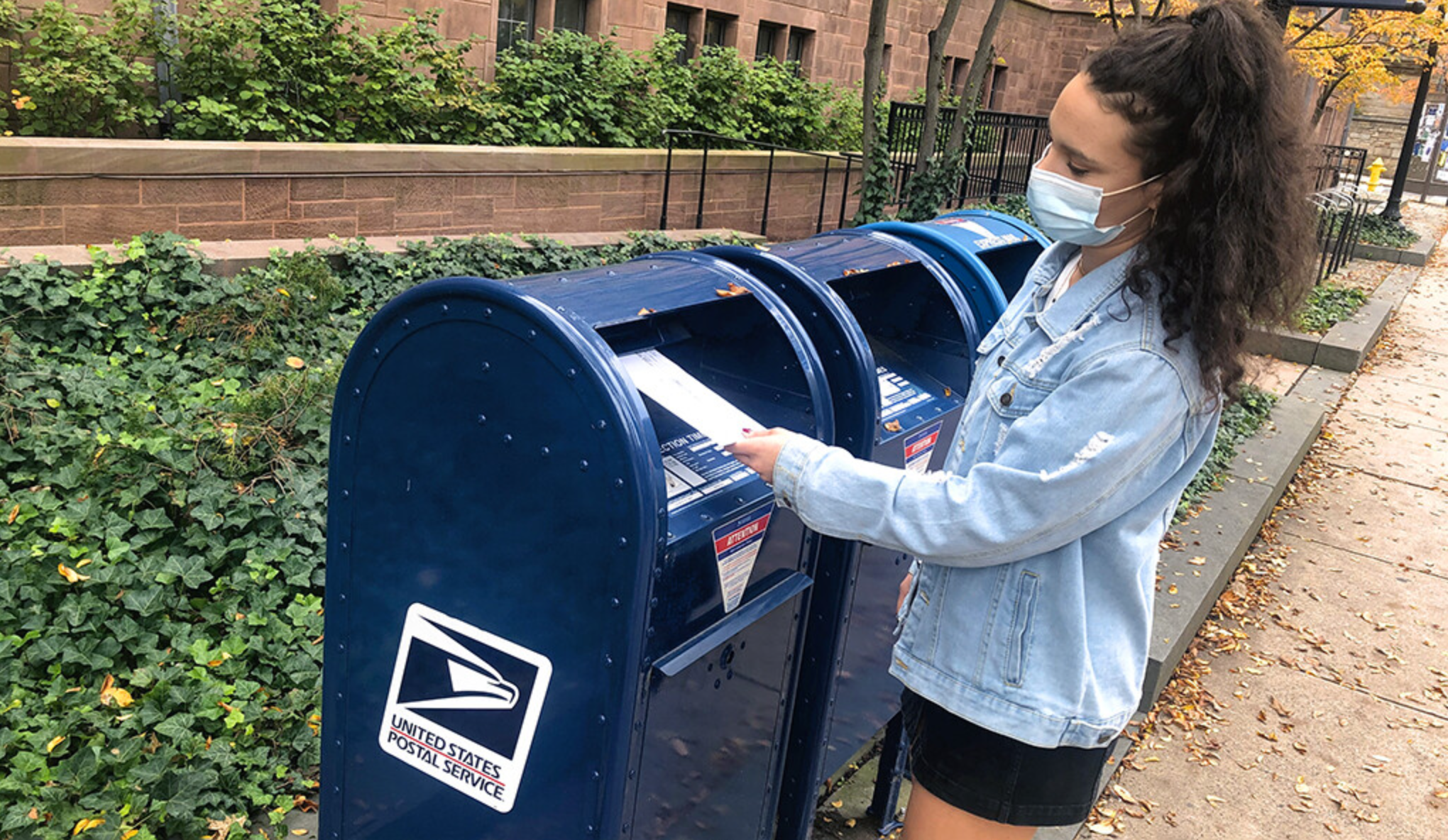
Four years ago, 56.7 percent of eligible voting undergraduate and graduate students at Yale cast their ballots in the 2016 presidential election.
That number was 24 percent higher than in 2012 — 32.7 percent — and also 8.4 percent above the national voter average among college campuses. But it is also not nearly high enough, according to a broad base of student organizers mobilizing the campus to vote in the 2020 general elections.
“Our mentality is that 100 [percent] eligible students should be registered and voting,” Yale College Democrats’ president Molly Shapiro ’21 told the News. “It would be a failure on our part if students aren’t mobilized — there’s so much at stake.”
This year, Yale Votes, a non-partisan coalition of student organizations including Every Vote Counts, the Yale College Dems and the Yale College Council, have been organizing a sweeping campus-wide campaign to encourage every eligible student to vote alongside University administrators through targeted messaging at individual students, faculty members and organizations.
To focus the group’s efforts, they have been examining data pulled from the University’s participation in the National Study of Learning, Voting and Engagement in 2016 and 2018 to identify trends in past student turnout at the polls. The NSLVE, run by Tufts University, measures student voter participation rates by accounting for the voting records of over 10 million students in all 50 states and Washington, D.C.
In September, President Salovey signed the All In Challenge, committing the University to convene a campus-wide committee and implement a concrete action plan to increase student voting rates and encourage students to value civic participation. As part of the challenge, past reports gathered from the NSLVE were also made public.
Yale’s 2016 voting turnout falls squarely mid-range compared to peer Ivy League institutions that have also publicized their data. In 2016, 59.0 percent of Brown University’s student body, 57.8 percent of Harvard’s student body and 46 percent of Cornell University’s student body voted in the general election.
Visualization by Zach Auster, Contributing Reporter
NSLVE’s disaggregated 2016 report reveals that STEM majors tend to vote at lower rates than those studying humanities and social sciences. It’s difficult, however, to draw any specific conclusions from the major and demographic group breakdowns, because the data set neglects to remove international students and other students who are not eligible to vote.
Henry Smith ’22, the voter engagement coordinator for Yale Votes, told the News that the coalition tried to address the apparent voting gap by curating their message to STEM faculty members. Smith explained that student coordinators shared more quantitatively-driven evidence rather than moral and civic arguments to encourage STEM faculty members to become “voter-friendly.”
“Voting shouldn’t be delegated to one group— it should be everyone on campus,” Smith said.
At Yale, voting turnout fell in 2018, a midterm year, to 46.8 percent, representing less than half of eligible student voters — a deficit replicated widely across the nation when the Oval Office is not up for contest.
Visualization by Zach Auster, Contributing Reporter
“Personally, I think that poor voter turnout contradicts Yale’s mission as an institution,” said Henry Smith ’22, the voter engagement coordinator for Yale Votes. “Student learning should not only be in the classroom but also on the ground, and engaging democracy through voting is one of the main ways to do that.”
Organizers this year are more determined than ever to streamline the voting process and make voting information more accessible despite the hurdles the pandemic has presented.
Matthew Youkilis ’24 is the voting engagement coordinator for Every Vote Counts, a civic engagement and voting advocacy organization representing around 50 college campuses that was launched at Yale in the wake of the last presidential election.
According to Youkilis, EVC has been working in conjunction with Yale Votes to organize students to text their friends and family members, reaching out directly to student social organizations, and setting up stations on cross campus so that students can print absentee ballots. Emails from state “captains” — students volunteering to support and answer questions from peers — have attempted to reach virtually every corner of the student body. Representatives of the coalition are also staffing a hotline on Election Day to provide voting support and respond to questions.
Yale Votes coordinators have also encouraged student organizations to publicly commit to full voter participation by taking a “Pledge to 100.” As of Monday evening, 16 organizations ranging from Yale International Relations Association to Yale Water Polo and Kappa Alpha Theta have signed on.
Coordinators also asked faculty members to become “Voter Friendly Professors” — nearly 50 of whom have, according to Smith — by publicizing voting registration information, integrating voting content into course material and accommodating class absences and assignment extensions on Election Day.
While Joshua Kalla, an assistant professor of political science at Yale, emphasized the urgency of voting on Tuesday, he also suggested that students exercising their right to vote now were also likely to build constructive habits throughout their adult lives.
To vote in Connecticut in the 2020 presidential election, you must have registered by Oct. 27 or register in person on Election Day.
Data analysis and visualizations by Zach Auster. Contact him at zach.auster@yale.edu.
Emily Tian | emily.tian@yale.edu






